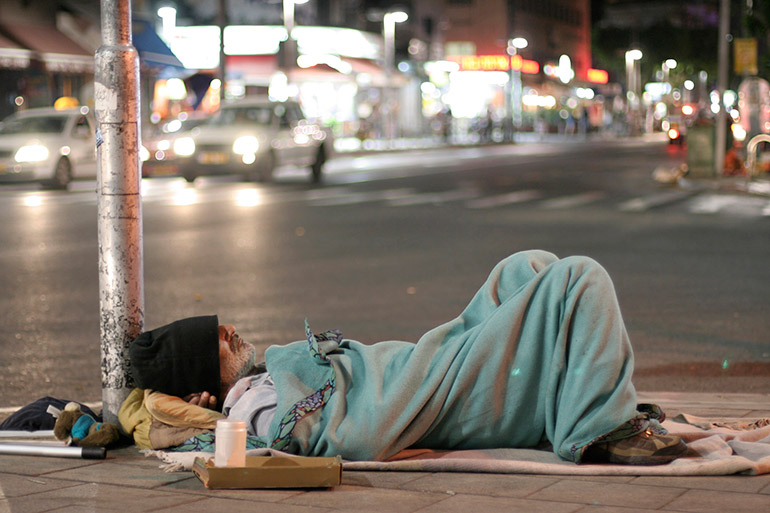
School of Social Work Director John Graham says that homeless people under the age of 65 have a mortality rate five to 10 times higher compared to the general population.
Forgotten population becomes more so during time of crises and disease
A team of UBC Okanagan researchers is looking at strategies that could help the homeless during a pandemic.
John Graham, director of UBC Okanagan’s School of Social Work, says while many populations have been targeted with guidelines to keep them safe, homeless people have been mostly overlooked.
While this research project began a few years ago, Graham says his team quickly turned their attention to the impact of COVID-19. His team looked at peer-reviewed publications, dating back to 1984, that examined how homeless populations were impacted by other highly contagious or communicable illnesses such as tuberculous, H1NI and Severe Acute Respiratory Syndrome (SARS).
“Those experiencing homelessness do not fare well in terms of general health and this risk rises during public health outbreaks,” says Graham. “Research findings have shown that homeless people under the age of 65 have a mortality rate five to 10 times higher compared to the general population.”
Before this research, Graham, who is principal investigator of the Kelowna Homelessness Research Initiative, says no one really knew how pandemics historically impacted services for the homeless sector.
“It’s important to remember that when public health officials make recommendations and response to a community they don’t necessarily take into account all populations,” he says. “Some of the methods of response are not easily transferable to the homeless populations — that’s partially because of their transient nature. But it is not unusual for homeless individuals to have a number of underlying illnesses, which could leave them more susceptible to virus obtainment, transmission and mortality.”
Postdoctoral researcher Jordan Babando says they looked at a range of journal articles from across the world and identified six key themes that particularly affect the homeless: education and outreach, structure of services provided, screening and contact tracing, transmission and prevention strategies, shelter protocols and finally treatment, adherence and vaccination.
“Those experiencing homelessness often live in low‐capacity shelters or transient locations that likely have no access to hygienic resources. This places them at increased risk of obtaining and spreading viruses in comparison to the general population,” says Babando.
Shelter overcrowding, poor ventilation and an accumulation of clients with predispositions to infection increase the risk factors for virus and also complicate detection and tracing procedure, he explains.
“These concerns provide extraordinary considerations for developing and implementing pandemic and outbreak response planning and protocols,” says Babando. “Trying to get the homeless population to come into the clinic for a vaccine and adhere to stay at home or social distancing regulations is difficult.”
The goal of this research paper, says Graham, is to help public health agencies and homelessness sectors formulate a pandemic response to homeless populations.
“We need to move the needle as quickly as possible when it comes to our homeless situation,” he says. “COVID-19 is extraordinarily significant for all of us, but most especially our vulnerable people. We hope these findings will contribute further to the dialogue help to end homelessness.”
The paper, published recently in Health and Social Care, was funded by the Social Sciences and Humanities Research Council.